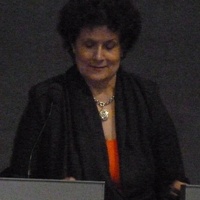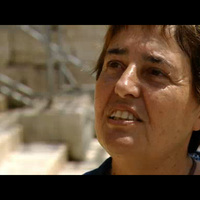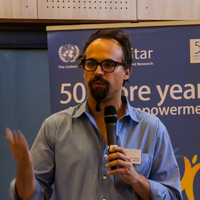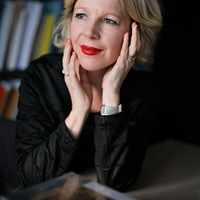
Aurogeeta Das
Address: United Kingdom
less
Related Authors
Claire Bishop
Graduate Center of the City University of New York
Renata Holod
University of Pennsylvania
Olga Palagia
National & Kapodistrian University of Athens
Kyle Whyte
University of Michigan
jelena bogdanovic
Vanderbilt University
Lewis Borck
University of Oklahoma
Juan Luis González García
Universidad Autónoma de Madrid
barbara baert
KU Leuven
Kim TallBear
University of Alberta
Zoe Todd
Simon Fraser University









Uploads
Papers by Aurogeeta Das
My opening essay, "Flowers from the Earth" (pages 1-9) highlights some of the art featured in the four exhibitions while also introducing the catalogue’s chapters, which explore Mithila's Dalit culture and art from myriad viewpoints: art historical, literary, artistic, and philosophic.
I also had the pleasure of translating from the French into English Martine Le Coz's essay "Encountering Mithila's Culture: Artistic and Philosophic Affinities" (pages 22-25).
This essay highlights the strength of myriad patterns in the works of Indian indigenous artists. I explore the underlying meanings of patterns, through symbolism, geometry, the gestural and the decorative. The essay also discusses the concept of authenticity in folk and tribal Indian arts, as well what we understand by the term 'master artist' in this field.
Publication date: Apr 2016
In their conversation, the writers and film-makers Raimi Gbadamosi
and John Akomfrah underline the hierarchizing effect of the concept
of hybridity on a world in which a certain kind of encounter becomes
idealized and, thus, reductive. “There is nowhere in which anyone exists
in a pure state or an uncontaminated whole,” concludes the latter. His
position resonates dramatically with the recent hardening of global
policies towards migration that flourishes on the foul breeding grounds
of populist and right-wing forms of nationalism, which withdraw into
obsolete notions of the preservation of “organic identities”. In that
context, discourses and worldwide events celebrating “indigeneity”
raise doubts on the viability of such a term if employed in a generalized
way—a risk that the National Gallery of Canada in Ottawa has challenged
in its recent exhibition Sakahan—International Indigenous Art, dissected
here by the artist and theoretician Aurogeeta Das.
Published by Manifesta Foundation, Amsterdam
My opening essay, "Flowers from the Earth" (pages 1-9) highlights some of the art featured in the four exhibitions while also introducing the catalogue’s chapters, which explore Mithila's Dalit culture and art from myriad viewpoints: art historical, literary, artistic, and philosophic.
I also had the pleasure of translating from the French into English Martine Le Coz's essay "Encountering Mithila's Culture: Artistic and Philosophic Affinities" (pages 22-25).
This essay highlights the strength of myriad patterns in the works of Indian indigenous artists. I explore the underlying meanings of patterns, through symbolism, geometry, the gestural and the decorative. The essay also discusses the concept of authenticity in folk and tribal Indian arts, as well what we understand by the term 'master artist' in this field.
Publication date: Apr 2016
In their conversation, the writers and film-makers Raimi Gbadamosi
and John Akomfrah underline the hierarchizing effect of the concept
of hybridity on a world in which a certain kind of encounter becomes
idealized and, thus, reductive. “There is nowhere in which anyone exists
in a pure state or an uncontaminated whole,” concludes the latter. His
position resonates dramatically with the recent hardening of global
policies towards migration that flourishes on the foul breeding grounds
of populist and right-wing forms of nationalism, which withdraw into
obsolete notions of the preservation of “organic identities”. In that
context, discourses and worldwide events celebrating “indigeneity”
raise doubts on the viability of such a term if employed in a generalized
way—a risk that the National Gallery of Canada in Ottawa has challenged
in its recent exhibition Sakahan—International Indigenous Art, dissected
here by the artist and theoretician Aurogeeta Das.
Published by Manifesta Foundation, Amsterdam
Many Visions, Many Versions explores the breadth and variety of cultural traditions in India, revealing a dynamic aesthetic that remains deeply rooted in traditional culture, yet vitally responsive to issues of global concern. Rather than taking a conventional approach to exhibiting these four distinct indigenous artistic traditions by separating them into sections distinguished by tribal and cultural affinities, the curators intentionally display the paintings thematically; accentuating the shared cultural features and contemporary concerns of these four communities that underlie the diversity of the artists’ unique expressive forms, techniques, and styles. The exhibition is divided into four broad categories: Myth and Cosmology, Nature – real and imagined, Village Life, and Contemporary Explorations.
India’s rise as an Asian power on the global scene has focused the world’s attention on the country and its culture. For American audiences eager to know more about Indian art, Many Visions, Many Versions offers an opportunity for viewers of all ages to learn about life and culture in India through these remarkable artworks. The volume includes essays by Aurogeeta Das, Wendy Doniger, Umesh Gaur, Frank Korom, B. R. Mani and David Szanton.
Publication date: January 2018.
Exploring his aesthetics, thematic engagements and art historical relevance, this book focuses on Niloufar and Mitchell S. Crites’ collection of Jangarh Singh Shyam’s paintings and drawings in New Delhi.
Publication date: October 2017.